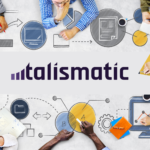The increasing significance of university career development teams is a clear indicator of the evolving role of educational institutions and their increasing obligations towards students. Universities, whose responsibilities, until a few years ago, focused on imparting the prescribed skills to students and granting them credentials upon graduation, are now increasingly being expected to assure and facilitate their students’ employment. This expectation has redefined student success, taking it from academic proficiency and accomplishment to employability. And accordingly, the redefinition has prompted universities to pay as much attention to post-graduate career development initiatives as college retention programs. Since a university’s ability to ensure its students’ career success is increasingly becoming a criterion to determine its standing among other educational institutions, career development teams need to rethink their approach with increased ‘mindfulness,’ which involves:
- Planning and goal-setting
- Identifying strengths and limitations
- Monitoring changes
- Adapting to the changes
Applied to university career development teams, here’s what mindfulness looks like:
Understanding the student’s career aspirations
Different students have different sets of goals and career objectives. The definition of career success itself may differ from one student to another. Understanding the students’ career ambitions and interests to plan career development initiatives will ensure there is no discrepancy between the university’s definition of student success and the student’s picture of success. Congruence in this regard is essential because often an educational institution’s definition of success is broad and does not consider individual success.
A university’s main interest is to have high enrollments, a high year-by-year retention rate, a high graduation rate, and a high employment-upon-graduation rate. Hence, the initiatives undertaken by a university, such as college retention programs and campus engagement initiatives, focus on achieving targets pertaining to the shared metrics, often ignoring the needs of the students. However, such metrics mean little to students, who are much more focused on exploring and finding career paths that are particularly suited to them and in places they desire, and they need assurance that their skills are future-proof. Students also have a number of other individual objectives and motivations, which play a significant role in determining their career preferences. Understanding student preferences and personal career aspirations will enable educators to ensure higher student success.
Understanding the employer’s requirements
Being aware of job market trends is a key requirement for career development initiatives, as it helps educators to guide students effectively towards employment. Most career development teams use the feedback received from alumni and employers within their network to gain information that’ll help students apply for the ‘right’ jobs. However, relying on merely a handful of resources is not the ideal way of gathering job market information, as the information may be biased in many ways. Thus, career development teams should turn to job market insights gained from sources with high reliability, such as analytics. Using analytics to gather labor market data for evaluating the demand for different skills will not only help students know where to apply and what to expect from the job market but can also help universities manage and improve their ability to keep up with the changing job market demand by assessing their teaching capabilities.
Assessing the institution’s teaching capabilities
Self-awareness is a chief tenet of mindfulness, and career development teams, in addition to being aware of the needs of employers, should also be aware of their institution’s ability to meet those needs. Self-awareness, in this case, would involve an assessment of not just the number of teachers and training facilities that are available for different skills taught by the institution, but also the relevance of the curriculum being taught. In fact, educators should begin their planning and budgeting by first assessing the relevance of, and the demand for the skills, that are being taught in their institutions. Identifying the skills that are most in demand and evaluating the institution’s ability to teach those skills can lead to effective course planning and improved results, like an increase in the employment-upon-graduation rate. This would require broadening the scope of career development initiatives to encompass all aspects of academic affairs, right from curriculum planning to on-campus placement drives.
As the job market keeps on evolving, it only makes sense for career development teams to constantly stay abreast of the changes in the job market and ensure their students stay employable through those changes. This requires institutions to create an iterative loop of flow of information and action, that will allow institutions to keep up with the demands of the students as well as employers. Educational institutions must gather insights from the job market to identify the demands of employers and use the information to plan curriculum. They can also gather data regarding the life on campus and plan college retention, and other similar programs, to ensure student success. In addition to using insights gathered from students and employers, career development teams should constantly assess the effectiveness of their initiatives in ensuring student engagement, since continuous feedback-based improvement is an essential aspect of mindfulness in thinking.




